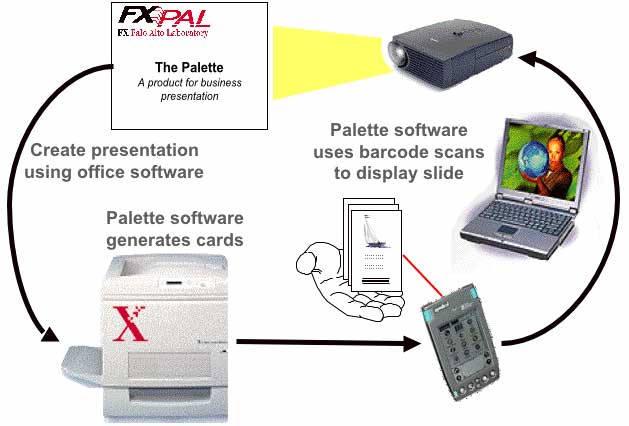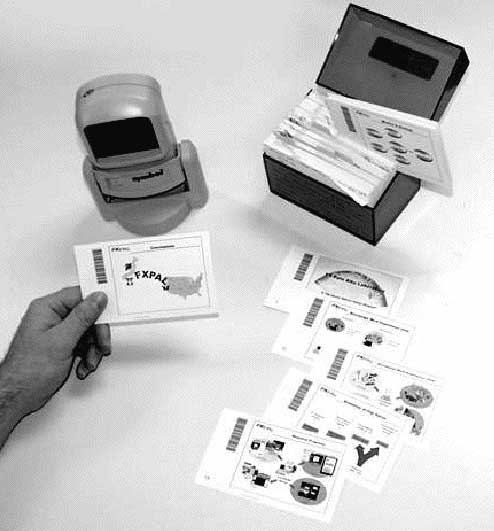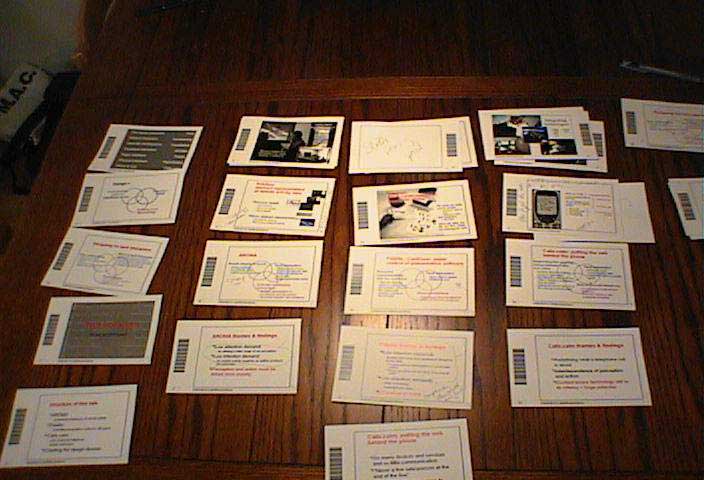
Palette takes some of the stress out of giving a presentation. With Palette the presenter can control her presentation by directly manipulating a pile of index cards. In preparation for a presentation the presenter will produce the index cards that are printed with slide content and a barcode - thus easily identified by both humans and computers. The Palatte prototyping started in 1997 at FX PAL, the research prototype was commercialized as CardGear in 2000 by Fuji Xerox.
A general question explored in this project was the power of paper interfaces -- and other tangible interfaces -- and in particular to what extent they might help the user to off-load important intellectual tasks (like operating a computer) and replace them with motoric tasks (like flipping through a stack of cards).
The paper interface did indeed help the user during the demanding time of giving a presentation, but at least two nagging problems remained: (1) techniques were lacking for bringing changes decided from the paper card version back into the computer; and (2) people tend to deploy increasingly more complex functionality and the simple "a card is a slide is a card" model was hard to scale accordingly. The latter problem was partly addressed in the subsequent PaperButton project.
Les Nelson, Satoshi Ichimura, Lia Adams, and Elin Rønby Pedersen: Palette: A Paper Interface for Giving Presentations. ISBN:0-201-48559-1. Pp. 354-361. This reference paper for the Palette presentation tool was presented at CHI 99 in Pittsburgh. ACM Portal to Computing Literature, see http://portal.acm.org/citation.cfm?id=303109

